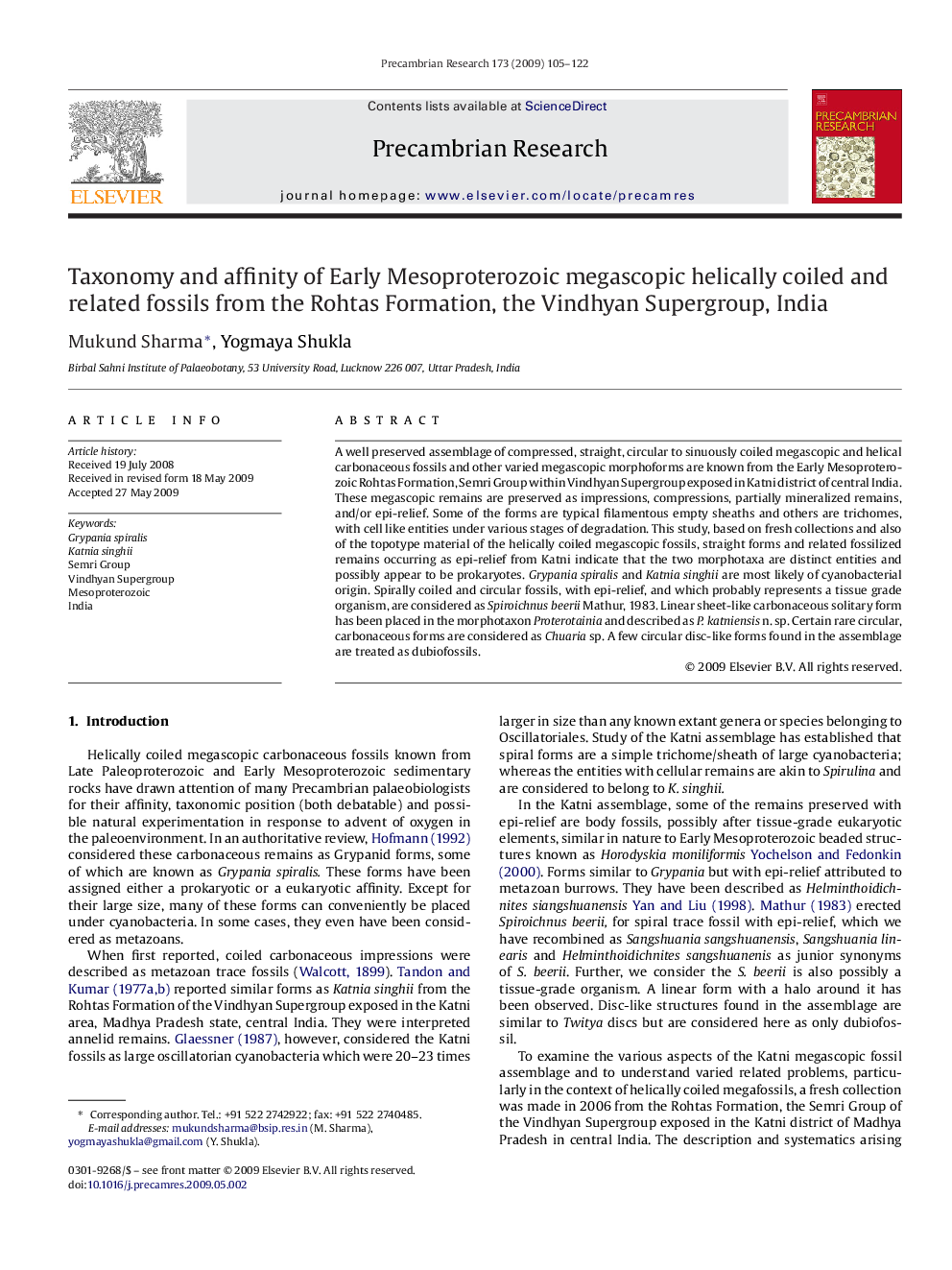| Article ID | Journal | Published Year | Pages | File Type |
|---|---|---|---|---|
| 4724028 | Precambrian Research | 2009 | 18 Pages |
A well preserved assemblage of compressed, straight, circular to sinuously coiled megascopic and helical carbonaceous fossils and other varied megascopic morphoforms are known from the Early Mesoproterozoic Rohtas Formation, Semri Group within Vindhyan Supergroup exposed in Katni district of central India. These megascopic remains are preserved as impressions, compressions, partially mineralized remains, and/or epi-relief. Some of the forms are typical filamentous empty sheaths and others are trichomes, with cell like entities under various stages of degradation. This study, based on fresh collections and also of the topotype material of the helically coiled megascopic fossils, straight forms and related fossilized remains occurring as epi-relief from Katni indicate that the two morphotaxa are distinct entities and possibly appear to be prokaryotes. Grypania spiralis and Katnia singhii are most likely of cyanobacterial origin. Spirally coiled and circular fossils, with epi-relief, and which probably represents a tissue grade organism, are considered as Spiroichnus beerii Mathur, 1983. Linear sheet-like carbonaceous solitary form has been placed in the morphotaxon Proterotainia and described as P. katniensis n. sp. Certain rare circular, carbonaceous forms are considered as Chuaria sp. A few circular disc-like forms found in the assemblage are treated as dubiofossils.
